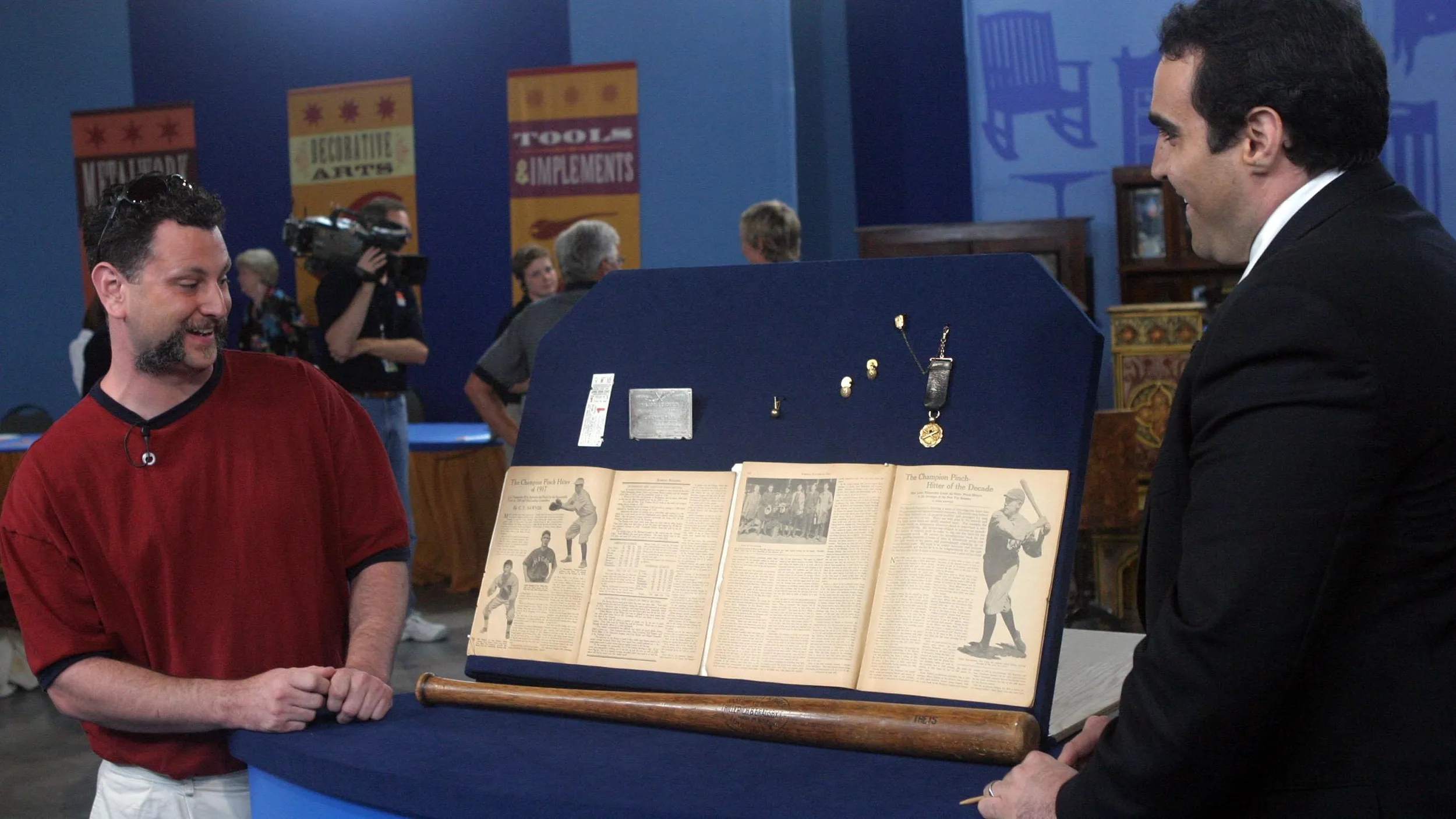GUEST: I acquired it from my mother, who died in '93, and I didn't know she had it until we were cleaning out her house. And she got it from a lady whose house she inherited after taking care of this lady.
APPRAISER: Well, whoever had this toy from the very beginning and up until now certainly didn't play with it too much. It's extraordinary condition. This is a Japanese toy.
GUEST: Right.
APPRAISER: And Japanese toys basically break down into three categories: what we call pre-war, which is pre-World War II...
GUEST: Right.
APPRAISER: And then post-war, which breaks down to occupied Japan, and non-occupied Japan. Some of the rarest toys are, of course, the pre-war toys, and they're very collected and very desirable, and this is a pre-war toy.
GUEST: Mm-hmm.
APPRAISER: You say, how do I know? Well, it says "Made in Japan," so it's certainly not occupied Japan.
GUEST: Right.
APPRAISER: And then we just look at the general graphics of the box, and this kind of amazingly ornate graphic down here is very typical of pre-war Japanese toys. What's extraordinary about this toy is the condition. This is celluloid, which is very susceptible to melting and cracking and breaking. Plus, you have paper, which is susceptible to staining, and then it still has the netting here that acts as a hinge for the canopy.
GUEST: Right.
APPRAISER: And of course, with all toys, what you really are looking for is the action.
GUEST: (laughs)
APPRAISER: And this one has a lot of action.
GUEST: Yeah.
APPRAISER: Now, I guess you'd want to know what it's worth.
GUEST: Yeah.
APPRAISER: Well, originally, it was worth about 49 cents.
GUEST: 49 cents, yeah.
APPRAISER: That was probably in the late '30s. This toy, I think in today's market, would easily bring $1,500 at auction.
GUEST: Wow, really? Well, thank you. That's wonderful.
APPRAISER: So, and it's a real gem, and I just, I love it.
GUEST: I love it. (laughing) I do, too.



